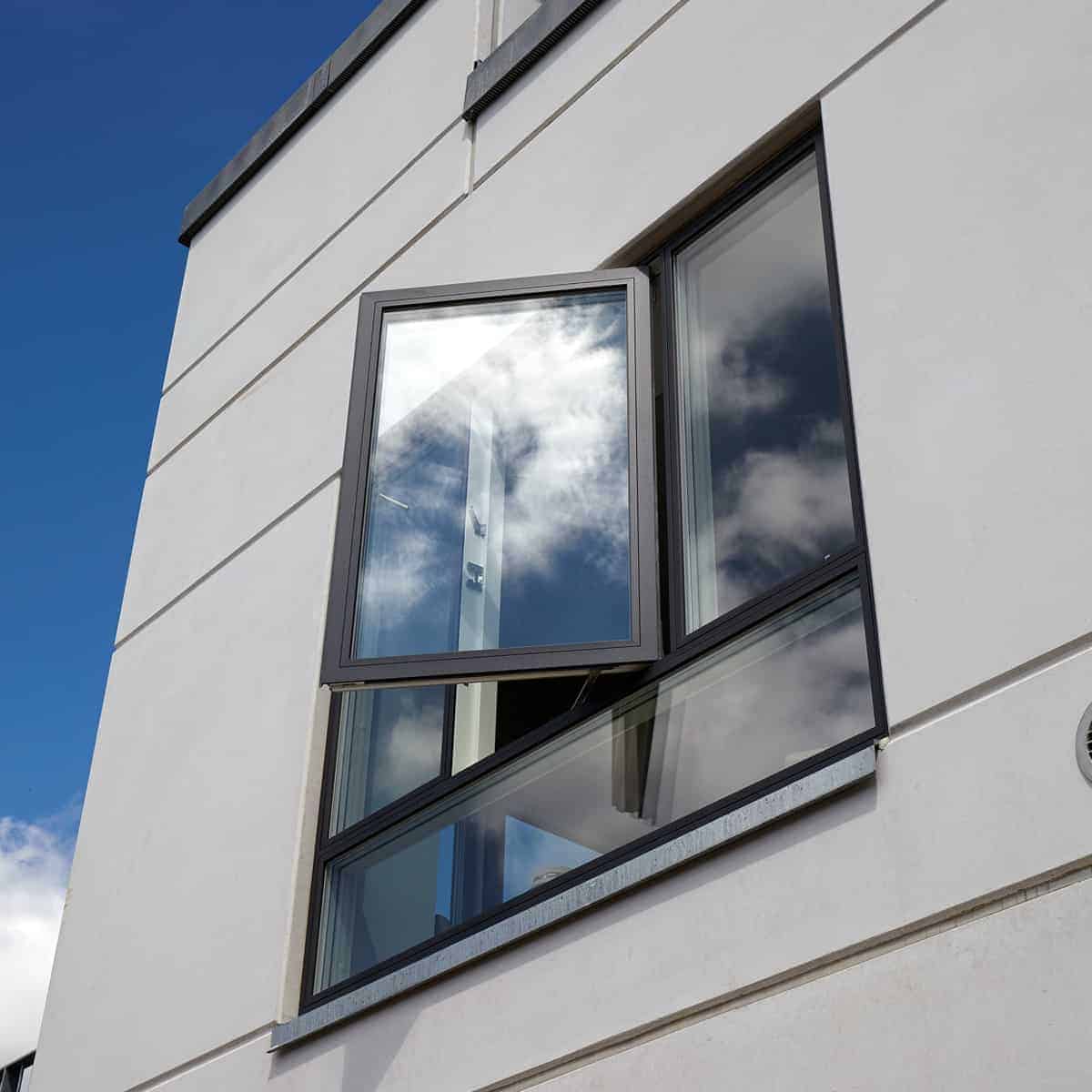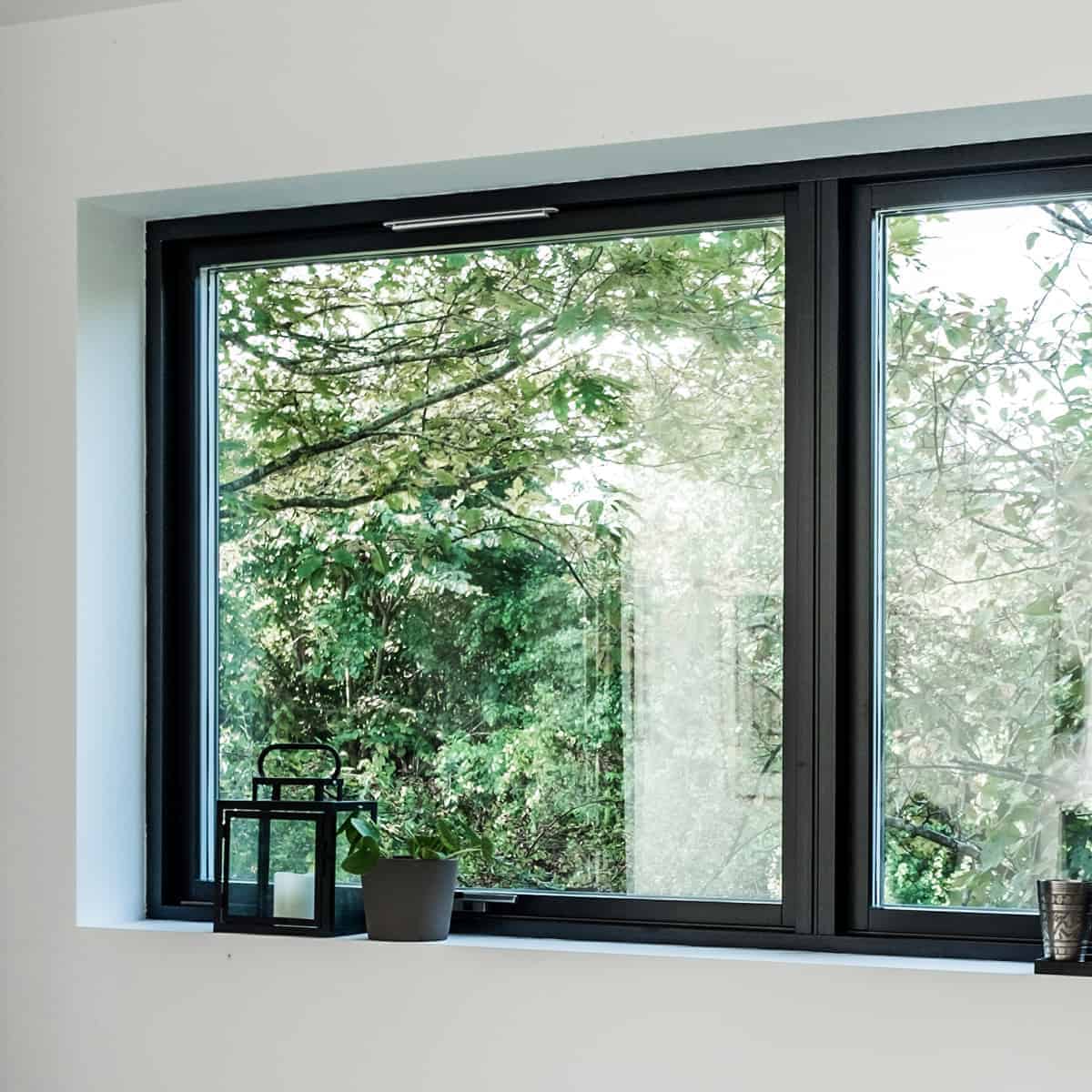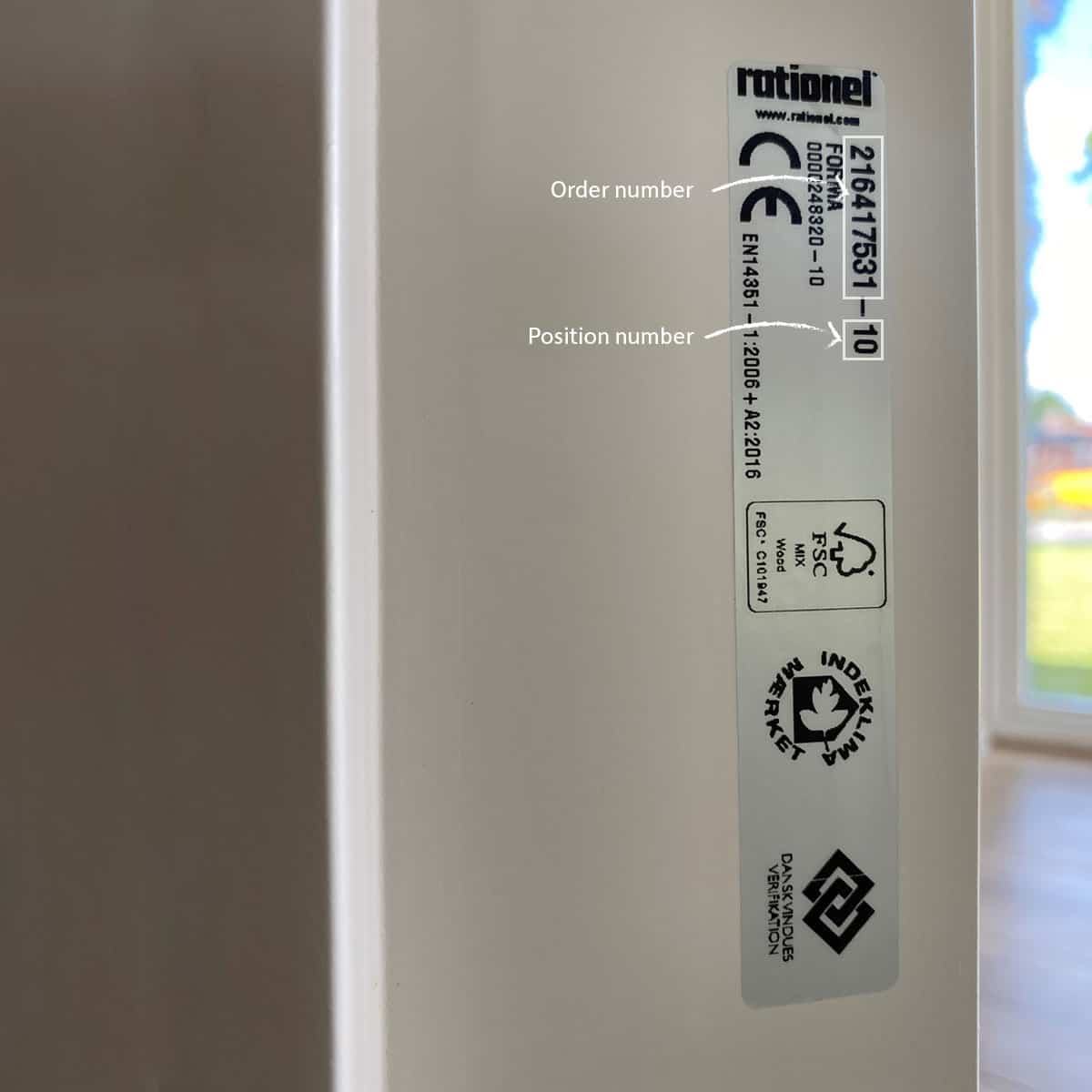
Rationel SOLAR glass helps prevent overheating as a result of sunlight falling directly onto a window. It’s often installed in office buildings which feature large glazed facades, but is also ideal for any south or west-facing façade in a family home. Rationel SOLAR Green and Grey feature tinted glass which reduces the amount of light and heat coming into a building.
Multi-functional glass
By minimising the impact of direct sun Rationel SOLAR glass delivers a range of benefits:
- Prevents overheating
- Supports a comfortable indoor climate
- Prevents glare from the sun or unwanted reflections
- Is almost identical in colour to standard glass
- Reduces the need for artificial cooling, cutting energy bills

Reduce the cost of cooling
Overheated rooms need mechanical cooling – such as fans or air conditioning – to maintain a comfortable indoor temperature and good indoor climate. This increase in energy consumption can be significantly reduced by installing sun-shielding glass.
Minimise overheating and glare
Solar gain – free heat from the sun coming through a window – can be a great benefit, but not when it causes overheating and a poor indoor climate. This makes Rationel SOLAR glass the ideal choice for conservatories, and can also reduce annoying glare and reflections caused by direct sunlight.
Only suitable for certain locations
As Rationel SOLAR glass provides permanent sun protection it is ideal for any room with the potential to overheat, but as it also slightly reduces light levels it is not suitable for every room.

Alternative sun protection
If only occasional sun protection is required, alternative strategies include:
- Shutters
- Awnings
- Overhanging eaves or roofs
- Strategic garden planting
- Curtains or other shading solutions
External or internal shading?
If you opt for internal shading solutions, such as curtains, remember that the sun’s rays will still penetrate through the window and heat the room before they are reflected, which is why external shading is a more effective way to reduce the sun’s impact.
Note: Sun-protecting films can cause tension across the glass pane, causing it to crack.
Different levels of sun protection
The level of sun protection provided by a window is determined by the amount of sunlight and the amount of the sun’s heat that are allowed to pass through the glazing. Sunlight is known as the Light Transmittance (LT-value) and the heat is known as the Solar Heat Gain (g-value). Other factors that may be considered are Energy Absorption (EA) and Energy Reflection (ER), these are the percentages of solar radiation absorbed by the glazing and the solar radiation reflected by the glazing.
- Sun SKN176:Approximately 64% transmittance*, 35% solar gain**
- Sun SKN165:Approximately 55% transmittance*, 31% solar gain**
- Sun SKN154:Approximately 47% transmittance*, 26% solar gain**
*= LT-value **= g-value
In comparison, a standard non-solar glazing would offer in the region of 74% light transmittance and 53% solar gain.
NOTE: All examples for triple glazed window elements.


